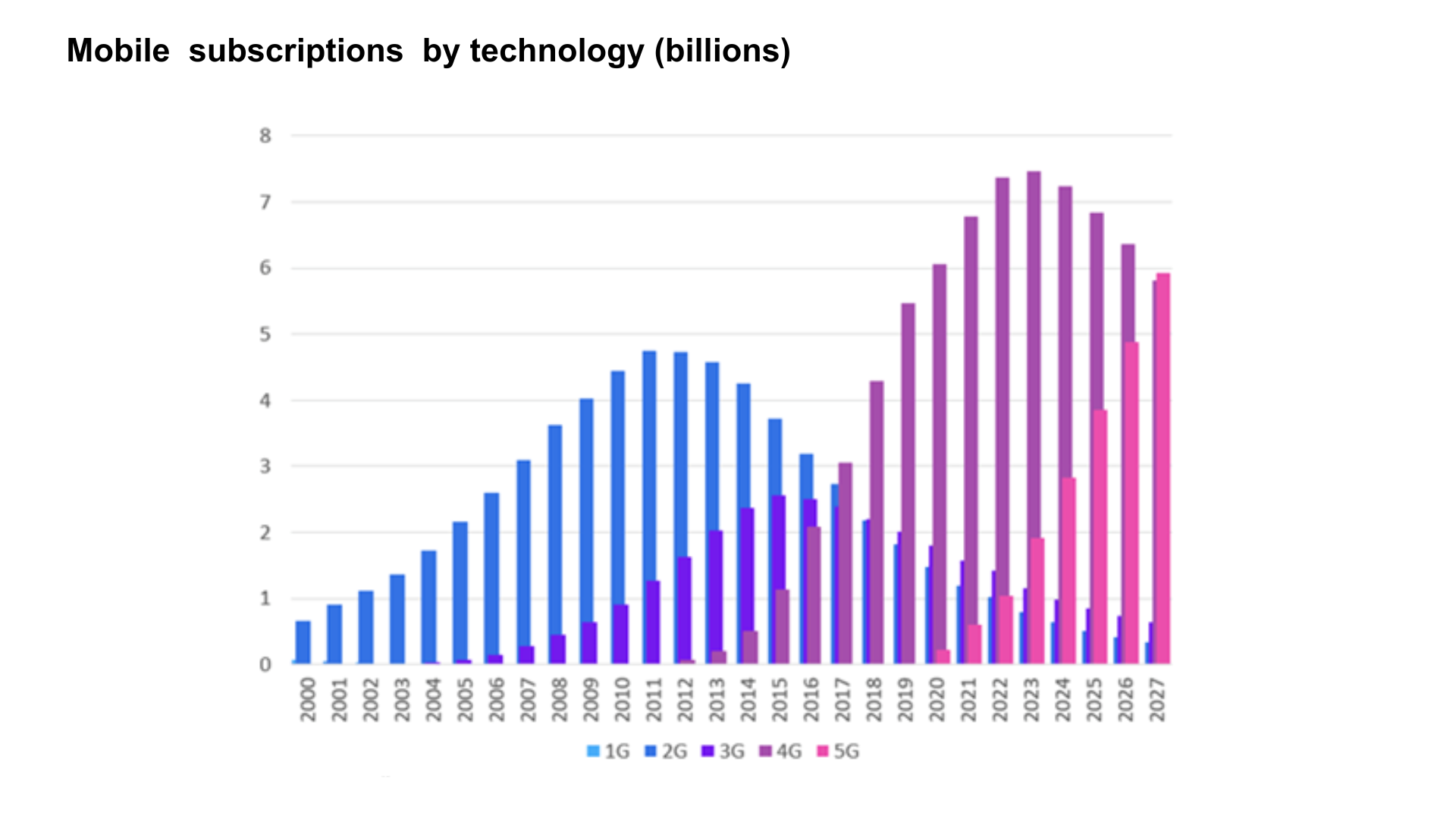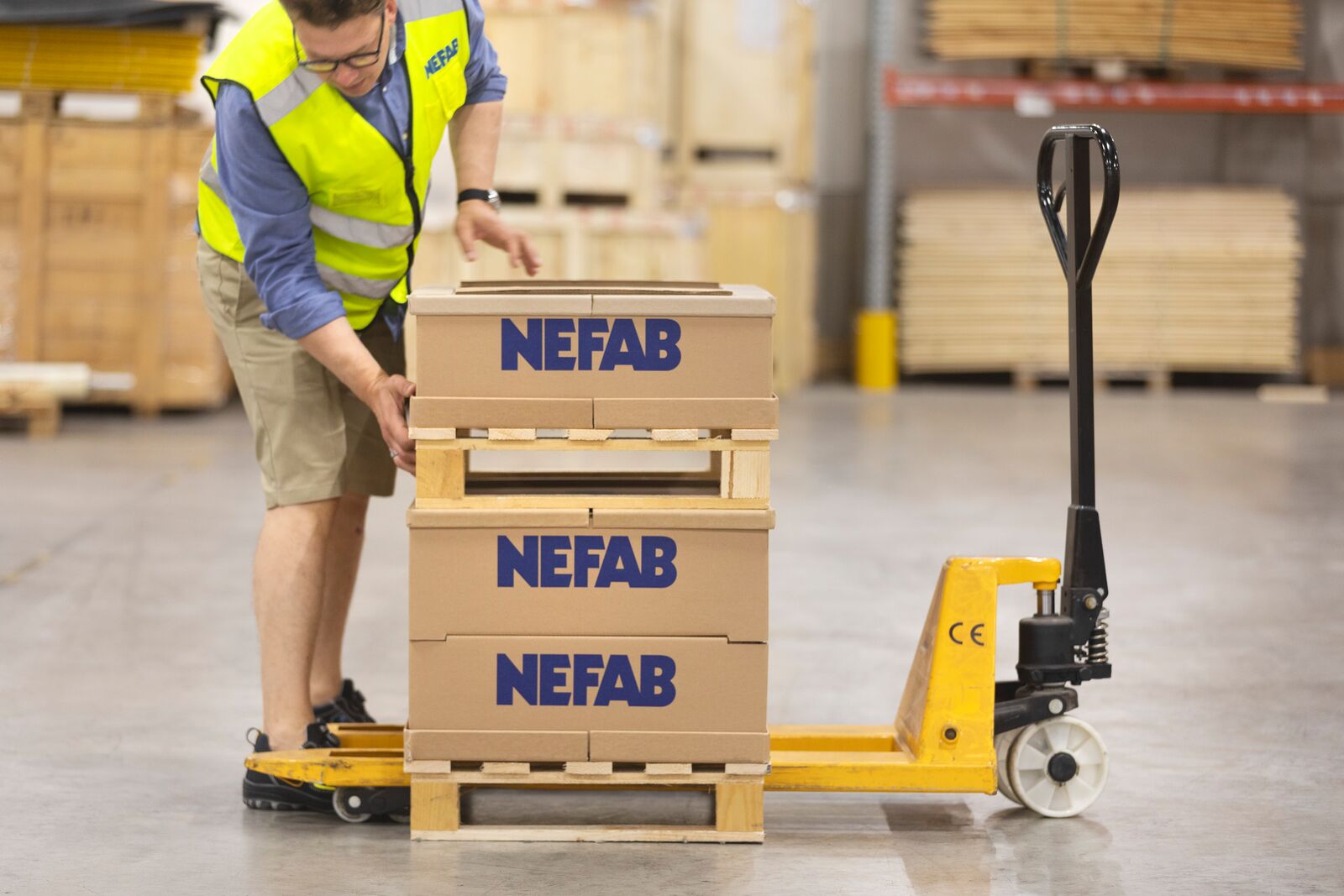The telecommunications industry provides essential services to billions of people and businesses every day. In fact, global data consumption over telecom networks is projected to nearly triple from 3.4 million petabytes in 2022 to 9.7 million petabytes in 2027. 1 While telecom companies focus on cost-cutting, optimization, and automation, they must also make substantial investments in the costly infrastructure required to serve their customers. At the same time, economic uncertainty, inflationary pressures, and geopolitical tensions are testing the resilience of our connectivity systems like never before.
"The world is evolving at unprecedented speed, and so is the telecommunications industry. Staying ahead hinges on rapid response to this change. The future of telecom will be defined by bold collaboration, unwavering commitment to sustainability, and real-time end-to-end supply chain visibility," said Jonas Steibert, Telecom Segment Director at Nefab. The path forward is clear: adaptability and innovation are key to navigating evolving supply chain challenges. Innovation must blend with sustainability, creating operational models that ensure safety and efficiency in resource management. New, collaborative business models will drive this transformation. Follow along as we explore how innovation and strategic partnerships will shape the telecom supply chain of tomorrow.

Research predicts that 5G is expected to reach 5.9 billion subscriptions by 2027, resulting in a 70.9% penetration rate among the global population. Source: Omdia
Innovating for Sustainability
The telecommunications industry is at a crossroads, facing increasing pressure to prioritize sustainability. The UN's Race to Zero Campaign, tax on plastic packaging, rising energy costs, complex network deployments, the rollout of 5G services, and heightened stakeholder expectations are just a few examples leading to the acceleration of efforts. 2 Now more than ever, telecommunications companies are urged to embrace solutions that help reduce their carbon footprint. One way to make it happen is by implementing waste management strategies. To increase their effectiveness, they must be integrated, particularly considering the often-remote installation destinations for telecommunications equipment, such as towers or antennas. Opting for easily recyclable or biodegradable packaging, such as fiber-based solutions, represents a significant step forward in aligning packaging practices with sustainable principles throughout the product lifecycle.
Another crucial avenue for reducing the environmental impact is to eliminate virgin plastic packaging from supply chains. Choosing innovative, fully recyclable materials and engaging packaging engineers in designing and testing new solutions are essential steps toward achieving both environmental responsibility and ensuring adequate protection for increasingly delicate telecommunication equipment. "When we develop an alternative packaging material, we first test it to ensure products’ safety. Then we make sure the material is available globally,” explains Jonas. “We encourage our clients to begin the innovation process with an environmental impact assessment using tools like GreenCalc to make informed decisions,” he added.

Switching to innovative, fully recyclable packaging materials like fiber-based solutions enhances the sustainability of a supply chain.
It’s More Than Just Packaging
“For companies navigating global markets, the question is how to move their product from one side of the planet to the other in the safest and most efficient way with the lowest possible impact on the environment,” said Jonas. Every successful global logistics process begins with robust, protective packaging, but it extends far beyond that. In the telecommunications sector, manufacturers deal with diverse, often delicate, and complex products, making warehousing processes such as storage and inbound and outbound handling - especially time-consuming. At the same time, focusing on the core competencies is crucial to keep costs under control, especially given the sector’s rapid growth. 3 According to recent studies4 , nearly two-thirds of surveyed companies plan to increase outsourcing of their supply chain management, with the global contract logistics market expected to grow by 4.2% in 2024. “By outsourcing packaging and warehousing management to a logistics service provider (LSP), businesses can reduce inefficiencies and streamline operations, ensuring products are stored securely and shipped safely,” added Jonas.
Warehouse Management Systems (WMS) is a type of software widely used in the telecom sector because it easily tracks all materials and goods as they come in and out of the warehouse. Moreover, WMS helps optimize various warehouse processes by creating systems to streamline how workers pick and pack orders, track stock-keeping units (SKUs) entering and leaving the warehouse, and more. Since the WMS holds all the information in one place, it allows you to quickly identify the available product when a new order comes in and simplifies the shipping preparation. The companies can also opt for the built-in inventory management software, which makes it easy to track goods in real-time, manage SKUs, and monitor performance over time. As a result, you can quickly optimize inventory levels and restock on time by setting up reorder notifications. This process also allows you to determine demand forecasts way in advance before it is time to restock. “Effective inventory management ensures meeting demand, optimizing storage, and avoiding unnecessary costs on deadstock,” explained Jonas.

From receiving, inspecting, putting away, picking, packing, and shipping to complete warehouse management, contract logistics can automate the supply chains and improve the tracking and tracing of each SKU.
Strategic Partnerships
The choices we make today shape our future. This is why sustainability principles must be embedded in the innovation process,” said Jonas. Choosing the right supply chain partner is crucial. By collaborating with a company that shares a commitment to sustainability, businesses can accelerate progress toward environmentally responsible practices and enhance their competitive edge. Additionally, such partnerships foster innovation by pooling together diverse perspectives and capabilities, ultimately driving meaningful change and creating long-term value for all stakeholders involved.
"At Nefab, our 60 years of dedicated experience in the telecommunications supply chain set us apart. We don't offer off-the-shelf solutions; instead, we innovate collaboratively with clients to create unique, industry-leading solutions. We envision a future supply chain that is transparent, connected, and environmentally friendly, driving us to continually push the boundaries of what’s possible," stressed Jonas.